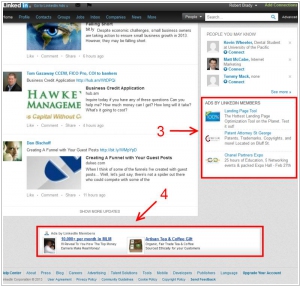Google Ads vs LinkedIn Ads
November 03, 2023 | Author: Sandeep Sharma
18
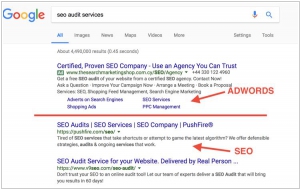
Google Ads (former Adwords) is an online advertising service that places advertising copy at the top or bottom of, or beside, the list of results Google displays for a particular search query. The choice and placement of the ads is based in part on a proprietary determination of the relevance of the search query to the advertising copy.
Google Ads and LinkedIn Ads are two popular online advertising platforms, each with its own unique strengths and targeting options. Google Ads, being the largest online advertising platform, allows businesses to reach a massive audience through search ads, display ads, video ads, and more. With its powerful keyword targeting and remarketing capabilities, Google Ads excels at capturing user intent and driving targeted traffic. On the other hand, LinkedIn Ads specializes in targeting professionals and businesses. It offers precise targeting options based on industry, job title, company, and professional interests. LinkedIn Ads are particularly effective for B2B marketing, recruitment campaigns, and promoting professional services.
See also: Top 10 Online advertising services
See also: Top 10 Online advertising services
Google Ads vs LinkedIn Ads in our news:
2020. LinkedIn introduces new retargeting tools
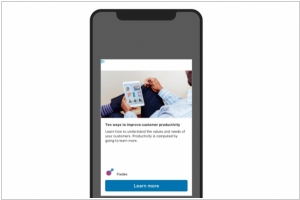
LinkedIn has introduced several exciting features for advertisers, including retargeting capabilities associated with video ads and lead-generation forms, along with brand safety integrations for the LinkedIn Audience Network. With the new retargeting functionality, advertisers can create and tailor ads to reach users who have viewed different percentages (25, 50, 75, or 100%) of their video ads. Moreover, they can target ads towards users who have interacted with Lead Gen Forms by either opening or submitting them. These enhancements provide advertisers with more precise targeting options and enable them to effectively engage with their desired audience on LinkedIn.
2018. Adwords rebrands as Google Ads, adds AI for small business
In July, Google's ad service, AdWords, will undergo a transformation and be known as Google Ads. However, this change involves more than just a rebranding. Google is introducing a new feature called Smart Campaigns, which will serve as the default mode for advertisers. Smart Campaigns empower advertisers to specify the actions they prioritize, such as phone calls, store visits, or purchases. Leveraging machine learning, Google Ads will then optimize images, text, and targeting strategies to generate a higher volume of these desired actions. This enhancement aims to enhance advertisers' overall campaign performance and effectiveness.
2016. LinkedIn Ads allows advertisers to use their own data for targeting
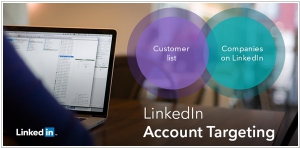
Advertisers on LinkedIn can now employ a new method to tailor their campaigns and focus on companies where they aim to generate sales. The introduction of LinkedIn Account Targeting allows businesses to provide their own list of sales accounts, which primarily consists of company profiles rather than individual user accounts. LinkedIn then cross-references this list with its extensive database of 8 million company pages on the platform. Subsequently, a user segment is created for precise ad targeting. Marketers have the flexibility to combine this feature with LinkedIn's existing targeting capabilities, enabling them to refine their campaigns by specific job titles in particular geographical locations, specifically targeting a select few thousand companies.
2015. Google Adwords will allow to target customers by email
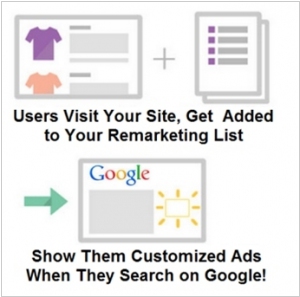
Google Customer Match introduces a fresh approach to connecting with your most valuable customers across Google Search, YouTube, and Gmail. This innovative product enables you to upload a list of email addresses, which are securely and privacy-consciously matched with signed-in Google users. Subsequently, you can create targeted campaigns and advertisements tailored to engage your specific audience. Users retain control over the ads they encounter, including Customer Match ads, by opting out of personalized ads or utilizing the options to mute or block ads from specific advertisers through Google Ads Settings. Additionally, Customer Match offers the opportunity to expand your customer base by showcasing ads to potential customers who share similar interests with your rewards members while they browse YouTube and Gmail.
2015. Google testing mobile ads with images
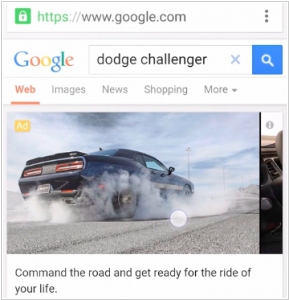
Google is introducing a change to its mobile phone Google Ads by replacing some of the text-only ads with visually enhanced photo versions. These new visual ads, currently available for car-related searches such as the Dodge Challenger, offer users the ability to browse through photos, gather product information, and make reservations directly from the search screen. This represents a significant departure from the text ads that tend to blend in with the overall search results. To cater to car buyers who are closer to making a purchase, Google is also providing franchise auto dealerships with improved location-based ads that include a click-to-call button and directions to their stores. A beta version of these ads is being made available this week. Brands that opt not to pay for the upgraded auto ads will still have the option to stick with the traditional text-only listings. While Google's mobile search results already display click-to-call phone numbers, directions, and occasional images for various business or product searches, these updates will offer companies greater opportunities to customize the user experience of their search results like never before.
2015. LinkedIn expands its marketing platform with off-site ads
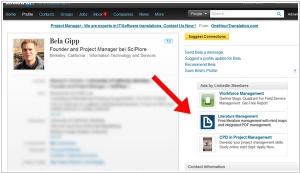
LinkedIn is introducing an enhanced version of its LinkedIn Ads platform, which now comprises five key components: LinkedIn Lead Accelerator, Sponsored Updates, LinkedIn Onsite Display, LinkedIn Network Display, and Sponsored InMail. The flagship feature, Lead Accelerator, enables businesses to segment their audiences and deliver targeted ads and content in a customized sequence for each group. Additionally, the new Display Network empowers advertisers to run campaigns on both LinkedIn and 2,500 publisher sites across the web. With these additions, LinkedIn now provides a comprehensive solution that caters to the entire sales funnel. It begins by attracting customers with On Site Display and Network Display ads, moves them through the funnel with Sponsored Updates and Sponsored InMail, and assists in the final stages of customer acquisition through the Lead Accelerator functionality.
2014. Adwords adds free dynamic sitelinks
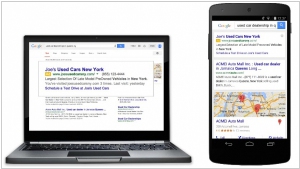
Google Adwords is introducing a worldwide rollout of dynamic sitelinks, which are automatically generated sitelinks displayed beneath your ad text. These dynamic sitelinks aim to enhance user experience by providing easier access to relevant pages on your website. According to Google, the inclusion of sitelinks improves ad relevance and the overall user experience after clicking on the ad. Notably, clicks on dynamic sitelinks are free of charge. However, advertisers will still incur charges for clicks on the ad headline and other ad extensions. Although dynamic sitelinks generally enhance ad performance, advertisers have the flexibility to disable them if desired.
2014. LinkedIn acquires B2B marketing service Bizo to power its Ads
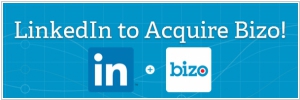
LinkedIn has announced its acquisition of Bizo, a service that specializes in assisting advertisers in reaching businesses and professionals. Bizo provides targeting and analytics capabilities for display and direct response advertisements. The acquisition deal is valued at approximately $175 million. In a blog post discussing the acquisition, David Thacker, a representative from LinkedIn, highlighted the increasing popularity of business-to-business advertising on the platform, particularly through its Sponsored Updates ad unit. LinkedIn's Marketing Solutions division generated $101.8 million in revenue during the first quarter of 2014, marking a significant 36 percent year-over-year growth. By incorporating Bizo's technology, LinkedIn aims to enhance its advertising offerings and provide an improved experience to its users.
2014. LinkedIn now allows to target Ads and posts by language
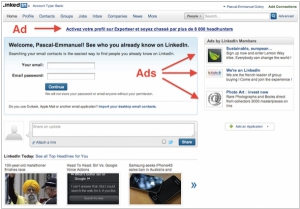
Marketers located outside the United States can now seize the opportunity to target LinkedIn Ads based on language preferences, allowing them to display ads exclusively to their native audience. Additionally, companies now have the ability to specify the target audience for each post in their feed, enabling them to tailor updates or ads for different user segments. This means that a company can share a post specifically with members in the United States, while sharing a distinct post with Brazilian users. Previously, when users visited a company's page, they would encounter all posts from that company, regardless of relevance or language. The introduction of these new geo-targeting tools is a logical step for LinkedIn, considering its extensive international user base. With the majority of the 3.5 million companies having company pages on LinkedIn located outside the US, this feature enhancement is highly relevant. It is worth noting that Facebook has been offering geo-targeted ads for several years.
2013. Adwords pulls advertisers to mobile ads
If your company is advertising via Adwords you probably regularly receive notifications to update to the new Enhanced Campaigns (until July 22). What is it and why you need it? The idea is that day by day more and more people use smartphones and more and more ad clicks are coming from smartphones. However, the value of those clicks for your business can be significantly different compared to clicks from desktop (they may be less or more valuable). For example, if you sell SaaS-service, the visitor who clicks on your ad on a smartphone can't immediately try your demo version, so the value of such click will be less. But if you're selling mobile application - these mobile clicks can bring you more buyers. ***

